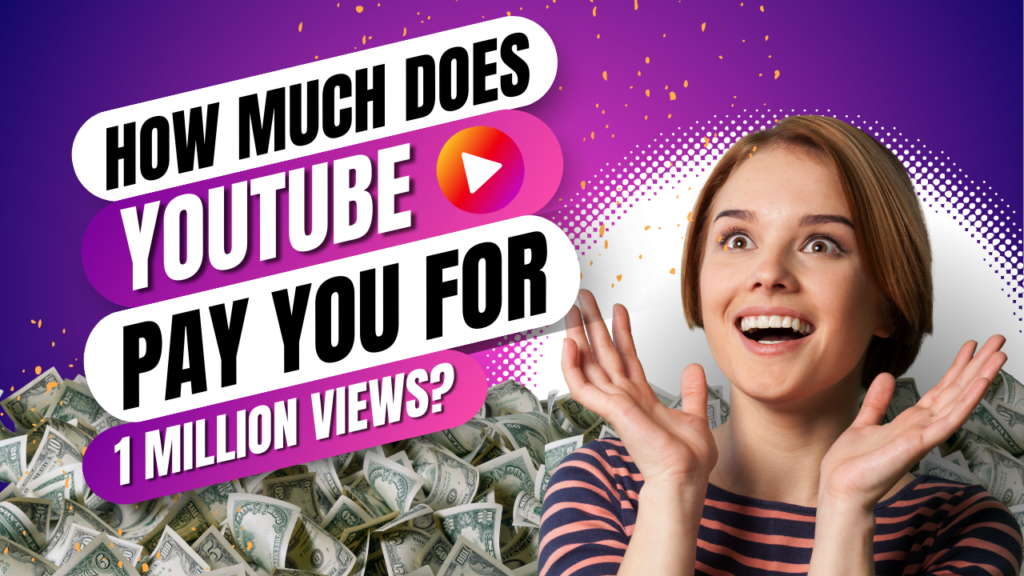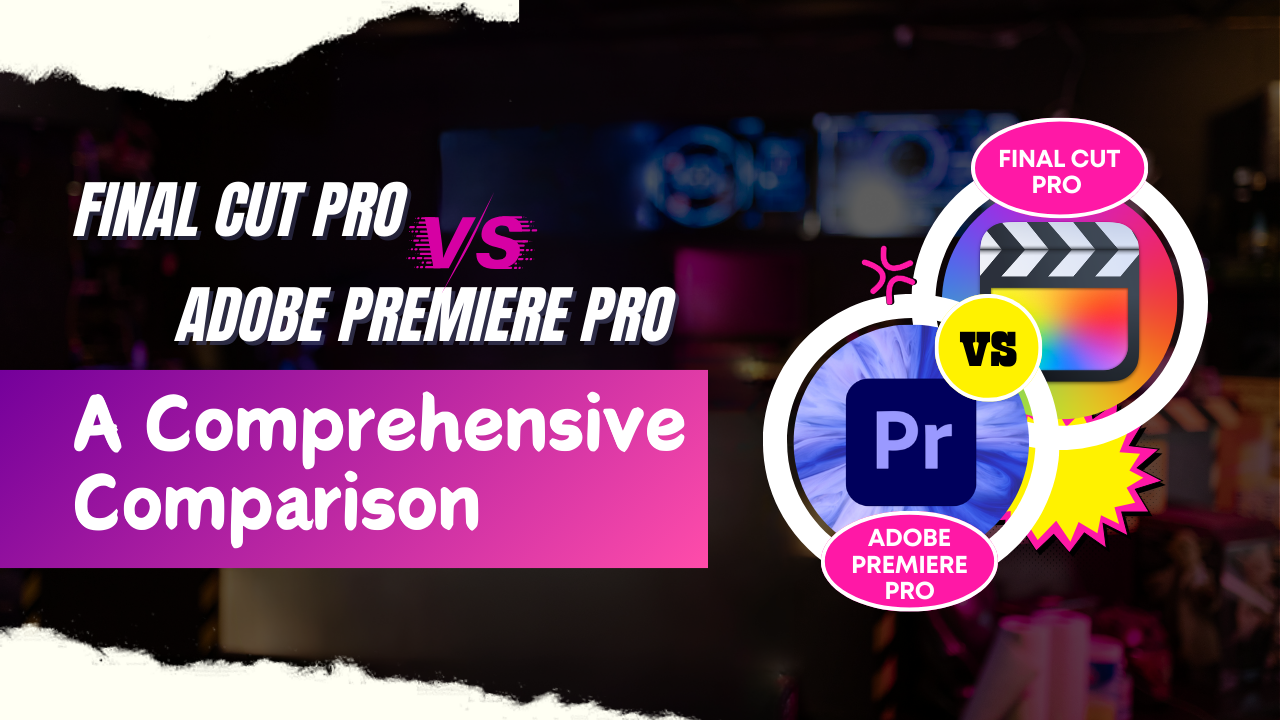Let’s get real about YouTube money – specifically, what you can actually earn from those coveted 1 million views.
If you’re creating videos (or thinking about starting), you’ve probably typed “how much does YouTube pay?” into Google more times than you’d like to admit. And who can blame you? With stories of YouTubers buying mansions and supercars, it’s natural to wonder what your slice of the pie could be.
Here’s the thing – YouTube earnings aren’t as straightforward as “1 million views = X dollars.”
As someone who works with content creators daily, I’ve seen channels with similar view counts earn wildly different amounts. Some make enough to quit their jobs, while others barely cover their coffee budget.
In this post, we’re going to break down exactly what you can expect to earn from 1 million views on YouTube. Plus, I’ll share some practical tips to help you maximize your revenue potential.
Want to take your videos to the next level?
The Short Answer: What Can You Earn From 1 Million Views?
Most YouTube creators earn between $2,000 to $5,000 per million views – but the real story is more interesting than just a number. Let me explain.
I’ve worked with hundreds of content creators, and I’ve seen firsthand how much these earnings can vary.
A gaming channel might make $2,000 from a million views, while a finance channel could pocket $10,000 for the same number of views. Tech reviewers often land somewhere in the middle, typically earning $4,000 to $7,000.
Why such a big range? It all comes down to your RPM (Revenue Per Mille) – fancy YouTube talk for how much you make per thousand views.
Think of it like this: if you’re selling lemonade, you’ll make more money in a busy business district than in a quiet neighborhood. YouTube works similarly.
Your earnings depend on what kind of ads play on your videos, where your viewers live (sorry, but viewers from the US bring in more ad money than those from many other countries), and how long people stick around to watch.
There’s even a seasonal factor – videos tend to earn more during the holiday season when advertisers are spending big.
Key Factors That Influence YouTube Channel Earnings

Like I earlier mentioned, YouTube’s earning per view is not straightforward. There are many factors that determine how much you get from a million views. The variables make it interesting which is why the figures are all estimates.
1. Niche
Your content niche plays a massive role in determining your YouTube earnings. Finance and business videos typically earn the highest rates because advertisers are willing to pay premium prices to reach viewers interested in money and investing.
Tech reviews and educational content follow closely behind, often earning $4,000-7,000 per million views.
Gaming and entertainment content usually earn less, around $2,000 per million views, due to high competition and younger audiences who advertisers value less from a marketing perspective.
So now you estimate what those cute cat videos can make you.
2. Geographic Location
Where your viewers live can dramatically impact your earnings. Videos watched in the United States, United Kingdom, Canada, and Australia generate the highest ad revenue because advertisers pay top dollar to reach these markets.
Western European viewers bring in the next tier of earnings, while views from developing countries in Asia and Africa often generate much lower revenue.
For perspective, a million views from US viewers might earn you five times more than the same number of views from Southeast Asia.
3. Seasonal Trends
YouTube revenue follows predictable seasonal patterns throughout the year. Surprised? You shouldn’t be, people spend more at particular times of the year than others.
The holiday season (October through December) is the golden period when advertisers increase their spending significantly, often doubling or tripling your usual earnings.
Another interesting period is the back-to-school season brings moderate increases, while January and February typically see the lowest rates as advertising budgets reset after the holidays.
Smart creators plan their best content for high-paying seasons to take advantage of the money in circulation.
4. Ad Types and Placement
The types of ads running on your videos directly affect your income. Pre-roll ads appearing before your video typically pay more than mid-roll interruptions.
Non-skippable ads generate higher revenue than skippable ones, though they might affect viewer retention. Where would you pitch your tent?
On the other hand, longer videos (over 8 minutes) can include multiple ad placements, increasing earning potential. However, balance is key – too many ads can drive viewers away and hurt your channel’s growth.
5. Watch Time and Engagement
YouTube rewards videos that keep viewers watching longer. Higher watch time means more opportunities to show ads and better engagement signals for advertisers.
Videos that maintain viewer interest throughout tend to earn more because YouTube can place multiple ads without risking viewer drop-off.
Strong engagement metrics like likes, comments, and shares also signal value to advertisers, potentially leading to higher ad rates for your content. Want to earn more? Creating engaging videos can help.
6. Content Safety
Creating advertiser-friendly content is crucial for maximizing earnings. Videos containing strong language, controversial topics, or graphic content often get limited ads or none at all.
Family-friendly content consistently earns more because it’s safe for all advertisers. Even minor issues like copyright claims can affect monetization.
Many successful creators maintain strict content guidelines to ensure their videos remain fully monetized. Check your content, is it too advertiser friendly?
Breaking Down YouTube Payment Calculation

We’ve seen the short answer of how much you can earn per 1 million YouTube views. But it was riddled with too many assumptions and estimates as evident by the many factors affecting earning.
It’s time to show the real workings, how you can calculate your YouTube earnings using some important metrics. Let’s start with understanding AdSense, one of the most vital criteria.
1. How AdSense Revenue Works?
YouTube shares 55% of ad revenue with creators while keeping 45%. Put simply, when an advertiser pays $100 for ads on your video, you receive $55.
This split happens after YouTube collects the money from advertisers and before calculating your CPM. CPM? What’s that?
2. Understanding CPM and RPM
CPM (Cost Per Mille) is what advertisers pay YouTube per thousand views. Your RPM (Revenue Per Mille) is what you actually earn per thousand views after YouTube’s cut.
For example, if advertisers pay a $10 CPM, your RPM would be $5.50 after the split.
With this out of the way, here’s an example of how to calculate how much you can earn per 1 million views:
If you have an average RPM of $4, here what the maths will look like:
1,000,000 views ÷ 1,000 = 1,000 sets of thousand views
1,000 x $4 = $4,000 total earnings
3. Payment variables
Despite this straightforward calculator, your real earnings is still a variable as factors like ad engagement vary. If viewers skip the ads on your videos, your earnings will drop.
Also, premium viewers don’t get to see ads, so you earn based on their watch time not ad views.
4. Payment Timeline
Wondering when you can get access to your earned income? Well, you may have to wait a little because YouTube pays monthly, but only after you reach the $100 threshold.
Earnings from January views typically arrive in late February or early March, giving advertisers time to complete payments and YouTube time to process them.
Tips to Maximize Your Earnings Per View

While earnings from MrBeast, and other high-profile channels steal the limelight, the reality is that most YouTubers earn very little from their channels because they are leaving money on the table.
However, if you’re among the low earning channels, it’s not all doom and gloom. You can maximize your earnings by following some of these tried and tested tips.
1. Video Length Strategy
Create videos between 8-15 minutes long. This length allows multiple mid-roll ad placements while maintaining viewer interest. Place ads at natural breaks in content to minimize viewer frustration and drop-off.
2. Content Retention Techniques
Start strong with an engaging hook in the first 30 seconds. Use pattern interrupts – visual or audio changes every 30-60 seconds.
Include teasers for later content to keep viewers watching. Add timestamps to improve user experience while encouraging full video consumption.
3. Ad Placement Optimization
Enable all ad types on your videos. Place mid-roll ads at natural transition points. Front-load important content to capture viewer interest before the first ad break.
Use end screens to drive traffic to other videos, extending overall watch time.
4. Content Quality
Focus Film in good lighting with clear audio – poor technical quality drives viewers away before ads. Structure content clearly with defined sections.
Include relevant visuals, b-roll, or graphics to maintain engagement. Get the help of a professional YouTube video editor to optimize these elements.
5. Target Audience Strategy
Create content for high-CPM regions like the US, UK, and Canada. You should also focus on topics appealing to audiences with purchasing power.
Often overlooked features like titles and thumbnails will attract quality viewers likely to engage with ads.
6. Seasonal Planning
You should release more content during peak advertising seasons (October-December). The idea is to take advantage of the peak selling period.
Create holiday-themed content when ad rates are highest. Consider building a content buffer for consistent uploads during high-CPM periods.
7. Channel Optimization
Keep content advertiser-friendly to avoid demonetization. By maintaining a regular upload schedule you satisfy YouTube’s algorithm and boost your channel’s perceived quality.
Use end screens and cards to increase session watch time across your channel.
Final Thoughts
The amount YouTube pays per million views is not straightforward, it depends on several factors like the location of your viewers, your type of content, ad engagement and even season.
You can estimate your earnings per million by multiplying your RPM by 1000. But this doesn’t tell the whole story.
While your earnings from the platform varies, you can improve it by following a few tips like ad content optimization and generally producing better content.
Your Video Editor can help with that using their full YouTube channel management or video editing service.






